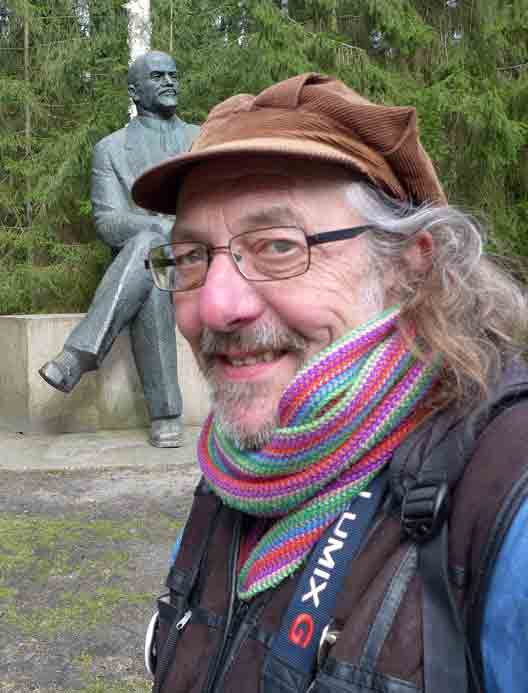
Alan Dearling
In the wake of the George Floyd killing by a white police officer in Minneapolis in the USA, Reuters published this on-line:
“Just days after the American Declaration of Independence in 1776, revolutionaries felled a statue of George III. During the French Revolution, Louis XV was torn down.
Josef Stalin fell in Budapest in 1956 during the Hungarian Revolution. Vladimir Lenin was toppled as first the Berlin Wall and then the Soviet Union itself crumbled.
‘Iron Felix’ Dzerzhinsky, who established what became the KGB, was pulled down in 1991 outside KGB headquarters in Moscow. In Baghdad, Iraqi President Saddam Hussein’s statue was felled after the invasion in 2003, with the help of American troops.”
From Reuters newsagency:
It provides a bit of context for the felling of Colston’s statue in Bristol by UK’s Black Lives Matter protestors because of his involvement in slavery. In London, the statue of Winston Churchill has warranted a new, ultra-secure box as protection, as successive protests and confrontations between various factions have taken place in the heart of the UK’s capital, especially focussed around Parliament Square and Trafalgar Square. Scottish BLM protestors have argued for renaming streets in order to erase the very memory of Scotland’s strong colonial past. But, at least for present, the re-evaluation of what we do with statues and monuments has become a global concern of almost pandemic proportions!
Statues and memorials are polarising symbols of past lives and events. Their significance and ‘meanings’ change over time. History is not static. Opinions change. Famous individuals are never 100% good or bad. They are humans, vulnerable, with weaknesses as well as strengths, they are sometimes misguided, they make mistakes and bad decisions as well as good. They change their minds, and are absolutely capable of extreme acts of good and evil. Our personal and societal response to them changes over time. We also respond to these statues with both our heads and our hearts – it varies depending upon our level of knowledge of who they are/were, what they did, and often what they ‘represent’ to us as icons, symbolic of power, glory, oppression and love. Very complicated – but thought-provoking. And, I would argue that they provide a kind of ‘gateway’ into discovering more about our histories around the world, and can sometimes help us make some sort of sense of those narratives.
I found this online report thought-provoking enough to include: Scott Sandage, a historian at Carnegie Mellon University, noted that Americans have a long tradition of arguing over monuments and memorials. He recalled the bitter debate over the now-beloved Vietnam Veterans’ Memorial in Washington when the design was unveiled.
‘Removing a memorial doesn’t erase history. It makes new history,’ Mr Sandage said. ‘And that’s always happening, no matter whether statues go up, come down, or not.’”
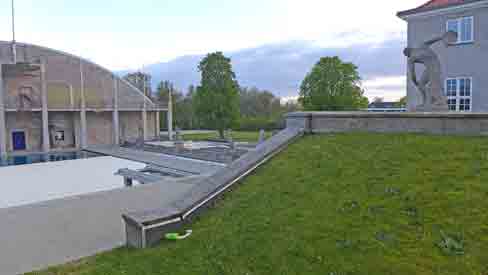
Ollerup Folk School (Gymnasium), on the island of Funen, Southern Denmark
In 2017, I was invited to give some presentations to members of Oko-Net – a green network of activists in Denmark. I stayed with the co-ordinator, Lars Myrthu-Nielsen, at his communal farm home in rural Denmark near Ollerup. The area is very flat and reminded me a lot of the polders in The Netherlands. After work one evening, Lars and myself walked up to Ollerup village and the extensive grounds of Ollerup Gymnasium which contain a large collection of huge sculptures. That visit unnerved me because the school also still houses a significant collection of memorabilia in the form of Nazi-era photos from the 1930s and ‘40s. Nearby is a German bunker network which has been preserved as a museum featuring the German occupation of Denmark. Lars and the headmaster both seemed reluctant to explain the reasons for the school photos and the preservation of the bunker which I think is also on school land. All that I could glean were phrases like, “We must remember the past.”
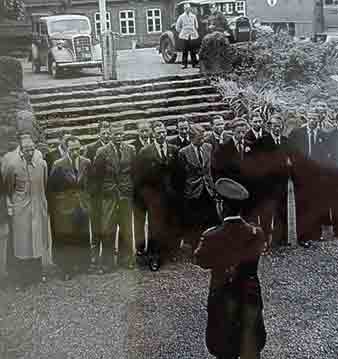
I was intrigued. So, given the current worldwide obsession with the meaning of sculptures and monuments, I’ve done some digging and delving. With some quite fascinating results, I think!
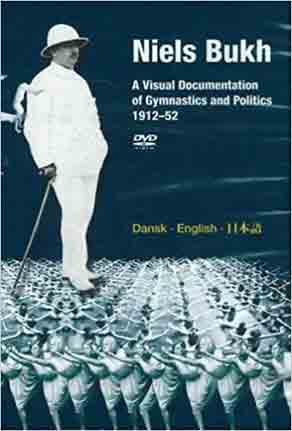
Now titled The International Academy of Physical Education in Ollerup, it is also simply known as Ollerup, and was founded in 1920. It was the first folk high school for gymnastics in Denmark. Folk Schools were the idea and concept originally developed by the Danish writer, poet, philosopher, and pastor N. F. S. Grundtvig (1783–1872). The Folk schools pioneered a curriculum and practice of popular (for the people) Education. Ollerup’s Gymastics – he called them ‘primitive’ – were developed in the 1920s and ‘30s by Ollerup school founder, Olympic gymnast, Niels Bukh. Apparently his concept was of ‘folkelighed’ (sport for all) …. Respect for what he called ‘youth revolt’ – youth was to be cultivated through physical ecstasy, mass co-ordinated movement and singing, plus a dose or two of Norse mythology (girls as well as boys after 1929). The school building and grounds contain much neo-classical art and architecture and it houses the first indoor swimming pool built in Denmark. The gymnastics that took place in the massive sports hall and in the extensive grounds were viewed by school principal Bukh as a ‘rite of passage’ towards Apollo-like status. Liminal transformation – going through the doorway… think of it as a kind of initiation ceremony. Indeed, it was central to the Nordic ideal that Hitler’s Nazi party and the Hitler Youth Movement idolised. Bukh was specifically invited by the Fuhrer to bring his Danish gymnasts to the 1936 Youth Olympics where they impressed Hitler’s own newspaper, ‘Volkischer Beobachter’ with ‘synchronisation and uniformity’….and the paper reported that the troupe had provided ‘a fine testimonial’.
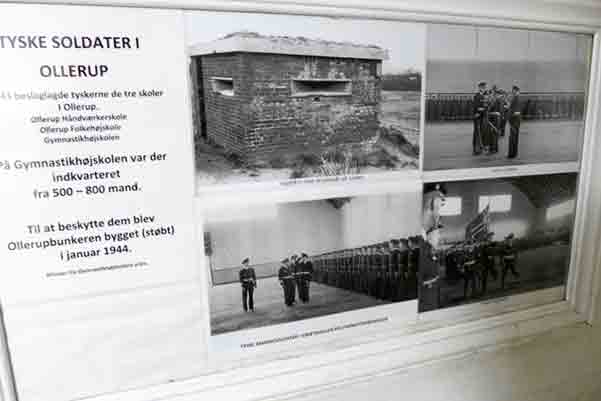 Here’s a link to video at Ollerup in 1935: https://www.youtube.com/watch?v=BHgK9hx0wbc&list=PLHp28dg37cQBsryVFDP4whTuYNlS9txNt&index=3
Here’s a link to video at Ollerup in 1935: https://www.youtube.com/watch?v=BHgK9hx0wbc&list=PLHp28dg37cQBsryVFDP4whTuYNlS9txNt&index=3
And here’s a very striking film clip of Bukh’s gymnasts demonstrating ‘male aesthetics’ on board a liner during a trip to the USA: https://www.youtube.com/watch?v=hQmUhZXM_I0
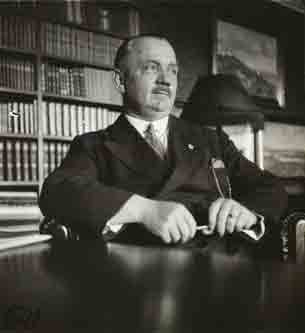
During his visit to Germany, Bukh said, “There is a great deal in the new Germany that is good and that we can learn from…a country where order and fellowship rules.” In 1933 Bukh is quoted as stating that, “Hitler’s power reaches everyone and seizes them at their innermost.” Bukh’s gymnastics were eagerly incorporated into the German education system in the 1930s (and also in military training in Japan)… based on the submission of the individual’s will to that of the instructor, coupled with rapid physical development. As described by author, Hans Bonde, it directly contributed to the Nazi epitaph: ‘Your body belongs to the Nation.’ In 1936, 10,000 young people participated in a gymnastics camp event at the privately run Folk School (at that time largely for farmers’ children). Denmark was occupied by Germany from 1940 until 1945 and Bukh’s school remained open until 1942 and was oft-visited by senior German representatives. During Bukh’s own visits to Germany, and in Denmark during the occupation, he met a number of high-ranking German officers including Goebbels, who he described as a friend, and Goring. Post-occupation, Bukh continued to admire the German troops’ ‘sense of order and discipline’. And during the occupation, on his 60th birthday, he said, “I live almost as if in heaven, here on earth.” By 1943, the Ollerup private school was a military barracks and Bukh received compensation from the German government which he used to purchase a manor house at Logismose Gods, about 9 miles away. He had hoped to become Danish Minster of Youth, and had already inaugurated the development of ‘Danmarks Ungdomsforbund’ (Youth League of Denmark), which worked in schools and homes and also initiated a planned ‘youth work programme’. But it would seem that Bukh was astute enough to recognise that the tide of the war was turning against the Germans and he began to lessen his overt support for them and the pro-Nazi Danish government. By 1945 the German troops had left and school was used to house 2,400 refugees for the final period of the war.
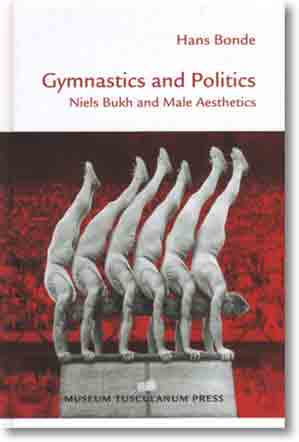
Probably on 12th May 1945, members of the Danish Resistance arrested Bukh in front of the school pupils at his recently re-opened school pupils, and temporarily held him captive. The post-war nation was deeply suspicious of Bukh’s Nazi sympathies and collaborations, as can be seen in this 1946 satirical cartoon.
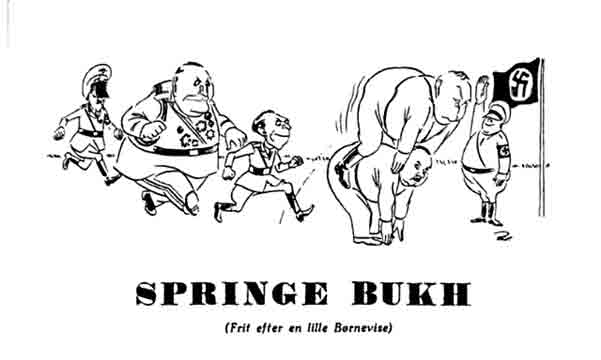 Charges of treason were dropped against Bukh in 1946 and he made strenuous efforts to obtain state funding from the new Farmers’ government for his Folk School. By May 1947 he achieved his aim and the Ollerup Gymnasium reopened with state funding – very necessary after the German occupation. Bukh’s reputation was tarnished but not his wealth and he remained the owner of the Folk School. And together with the re-opening of the school, the school grounds were developed with the later addition of nine replica Greek sculptures of athletic heroes – six male and three female. Bukh died on 5th July 1950, with the state now running the gymnasium school, and in 1959 a big memorial sculpture was erected in testament to Bukh – mostly one hopes to the positive legacy of his life.
Charges of treason were dropped against Bukh in 1946 and he made strenuous efforts to obtain state funding from the new Farmers’ government for his Folk School. By May 1947 he achieved his aim and the Ollerup Gymnasium reopened with state funding – very necessary after the German occupation. Bukh’s reputation was tarnished but not his wealth and he remained the owner of the Folk School. And together with the re-opening of the school, the school grounds were developed with the later addition of nine replica Greek sculptures of athletic heroes – six male and three female. Bukh died on 5th July 1950, with the state now running the gymnasium school, and in 1959 a big memorial sculpture was erected in testament to Bukh – mostly one hopes to the positive legacy of his life.
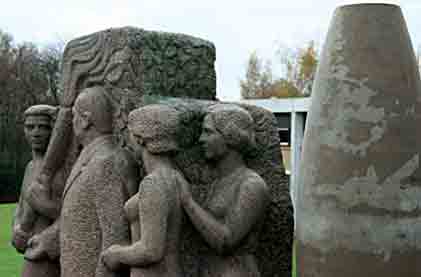
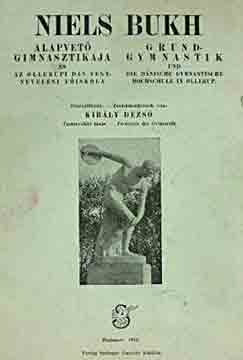
Out on southern perimeter at the edge of the playing fields are a series of massive L-shaped sculptures. Known as the ‘Windrow’, they were built in what I’d call almost Bauhaus-style for the ‘Landsstævne’ (the Danish Festival of Sports and Culture) in 1935. The event was hosted at Ollerup and named ‘The Nordic Olympics’ by Niels Bukh. He was a Danish national Olympic hero, so his gymnastics’ programme with young people has to be seen in that context. The Nordic Olympics at Ollerup was conceived as a location for events, anticipating a capacity of 50,000 spectators.
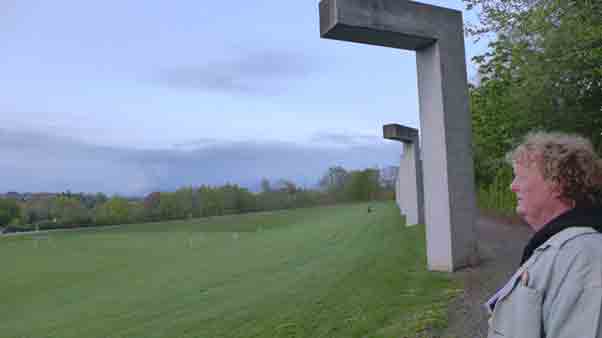
My friend Lars in front of the Windrow
The Windrow sculpture was the work of painter, Hein Heinsen’s. It includes sculptures named, ‘The Grand Pointers’ and ‘The Spectator’, each weighing 24 tons. They were designed to remind Ollerup of its cultural heritage by pointing to cities that have influenced Western culture: Jerusalem, Athens, Rome, ‘Utopia’ (the dream of an ideal city), Paris, New York and Los Angeles.
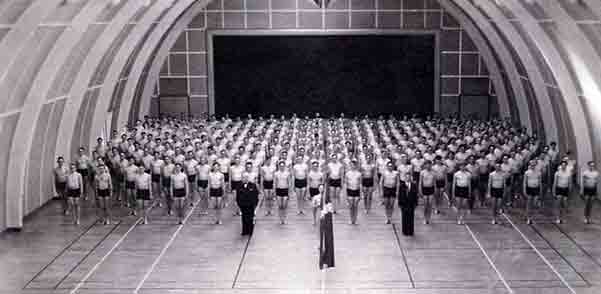 I’m still personally a bit perplexed. These days, all the bad and questionable aspects of Bukh’s life seem to have been airbrushed out of many modern Danish histories of Ollerup. For example: https://ollerup.dk/application/files/8615/0650/4975/Kunstfolder_GB.pdf
I’m still personally a bit perplexed. These days, all the bad and questionable aspects of Bukh’s life seem to have been airbrushed out of many modern Danish histories of Ollerup. For example: https://ollerup.dk/application/files/8615/0650/4975/Kunstfolder_GB.pdf
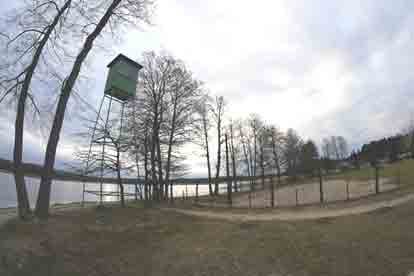
Grūtas Park is unofficially known as Stalin’s World; in Lithuanian: Grūto parkas. It‘s a seriously weird place.
Think: Disney Theme Park to the Soviet Communist Era. I spent about five hours there in winter-time. I found it alternately disturbing, enlightening, creepy and confusing. “Is this a celebration or a condemnation?” kept flashing through my mind.
It’s described in Wikipedia as:
“… a sculpture garden of Soviet-era statues and an exposition of other Soviet ideological relics from the times of the Lithuanian SSR. Founded in 2001 by mushroom magnate Viliumas Malinauskas, the park is located near Druskininkai, about 130 kilometres (81 mi) southwest of Vilnius, Lithuania.”
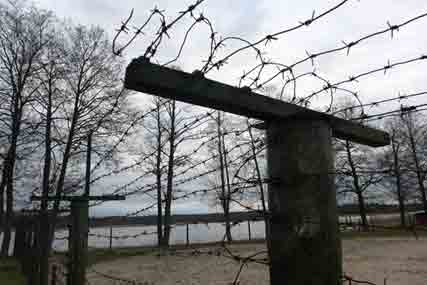
Apparently, Viliumas was awarded the IgNobel Peace Prize in 2001! Over 75 per cent of the information boards describing the statues and the exhibitions in the museums and art gallery are in Russian, Lithuanian and English. It’s easy to see why he was nominated. He even went and personally collected his award. Yet, there is a considerable sense of humour exhibited at Grutas. Hundreds of Misha Bears from the 1980 Moscow Olympics sit alongside Stalin, Lenin, Marx and Engels
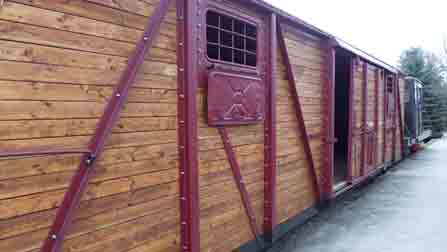
– all enclosed in a mock-up of a Gulag prison camp. Viliumas has actually planned to build a railway line out to Grutas Park so that visitors can travel in cattle trucks in order to get the full Grutas Experience! Dark humour, indeed! It is locally and nationally very controversial in Lithuania.
The website, comes complete with some hilarious English! For example: “see the naked Soviet ideology”… and… “the refined execution of the Soviet policy having recourse to military, political, ideological, artistic and other measures, concealment of crimes and worship of criminal principals.” http://grutoparkas.lt/en_US/
It’s a sizeable woodland park, and takes about three hours to walk around. Here is a selection of the statues I photographed on my walk.
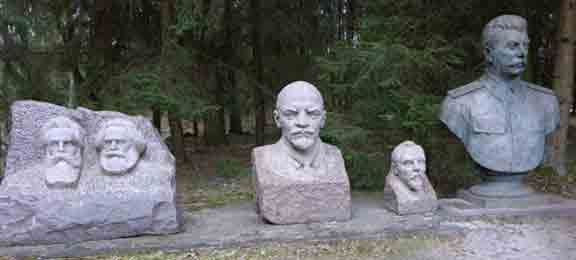 Founders of Communism
Founders of Communism
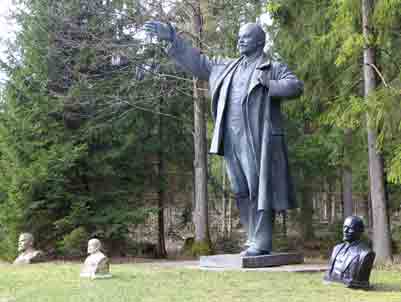

Here’s a humorous, and rather fab short video from The Lady Travels on a visit to Druskininkai, who suggests it should be called ‘Lenin Land’. Well worth watching: https://www.youtube.com/watch?v=AFcqnIzy6Q8
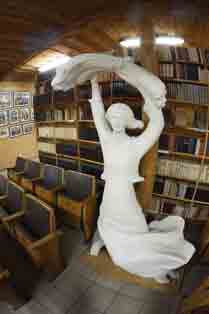
Boris Yeltsin recognised Lithuanian independence in 1991. Hundreds of Soviet statues were pulled down, destroyed or unceremoniously dumped. Viliumas Malinauskas petitioned the Lithuanian authorities to grant him the possession of many of these sculptures, so that he could build a privately financed museum. He succeeded despite public outcry. The park also contains a Soviet-period children’s playground, a depressing mini-zoo, and a café-cum-museum which serves old-style food dishes and eulogises about Good Ol’ Viliumas. Sometimes actors stage re-enactments at various Soviet-sponsored festivals. In addition to famous Russian leaders, many of the statues are celebrations of pro-Russian and a few anti-Russian fighters, mostly born in Lithuania. At its heart is the exploration of communism and the fraught relationship between Russia and Lithuania. As well as the 86 major sculptures, there are many smaller ones, large museums and a Soviet Art Gallery. The museums provide plenty of commentary through contemporaneous newspaper articles, photos and memorabilia. It’s grimly educational about histories I didn’t know or understand.
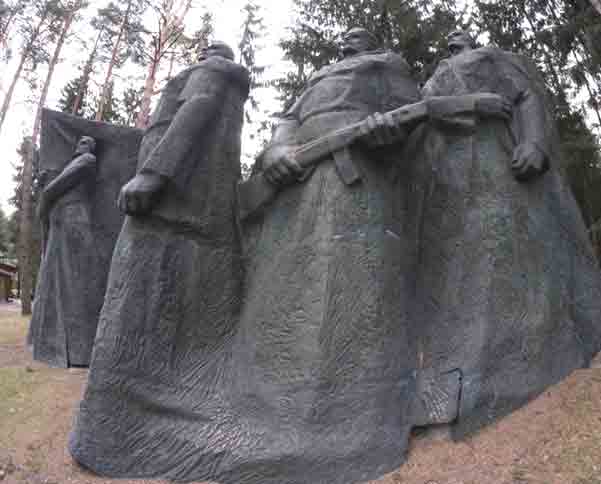
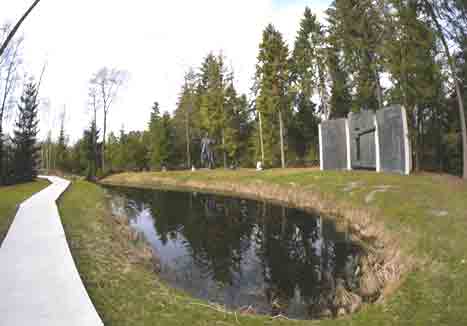
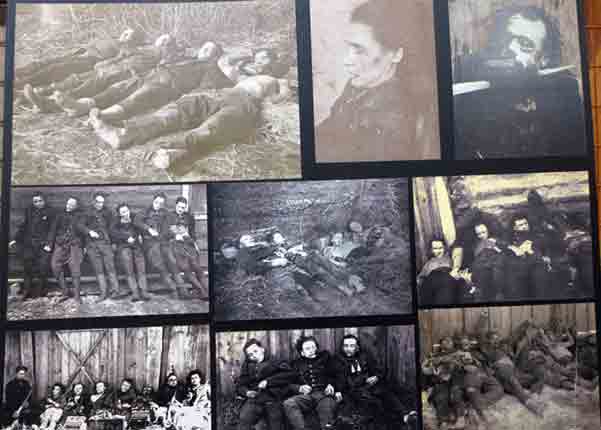
I didn’t realise it during my visit, but Grutas is organised into ‘spheres’. The Totalitarian Sphere features sculptures of the main Communist leaders and thinkers, including Vladimir Lenin, Josef Stalin, and Karl Marx. The Terror Sphere is dedicated to sculptures of founders of the Communist Party of Lithuania. The Soviet Sphere includes sculptures of the four leaders of Lithuanian Communists, executed in the aftermath of the 1926 Lithuanian coup d’état, and activists of the Lithuanian-Soviet War of 1918-1919. The Red Sphere is dedicated to Soviet partisans, including Marytė Melnikaitė. The Occupation and Death Spheres showcase the most brutal side the Soviet regime: mass deportations, suppression of the Lithuanian partisans, torture, death camps and more.
According to ‘The Economist’, “As countries grapple with their unsavoury pasts and consider the rightful place of their controversial monuments, the park offers an alternative model to museums or destruction.”
I found it illuminating to read what other visitors thought about Grutas Park on Trip Advisor:
Jerry, Warsaw, Poland: “In regards to the reason I went, which was the Soviet statue graveyard, I wasn’t disappointed. The only other place I’m aware of even remotely similar to this is Memento Park in Budapest.
Basically, you arrive and then follow the path around. The statues are nicely displayed and spread out in a rather large park. I liked how they did it to give each one its own space, considering many are rather enormous. There are three small building housing different items as well, some smaller, some bigger. Included in there are paintings, carpets, books, more statues, and various pieces of propaganda memorabilia from back in the day.”
Fritz Kubrick, Sweden: “This collection of statues and monuments collected from all over Lithuania, along with a museum and an art gallery is the best presentation of Soviet art and history I’ve ever visited.”
AdventurePhiles, Dallas, USA: “Somber, but excellent, history lesson with some strange contrasts.
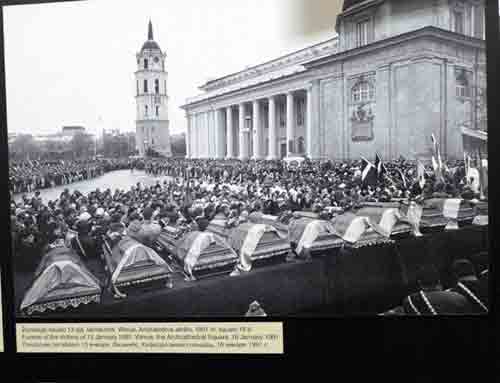
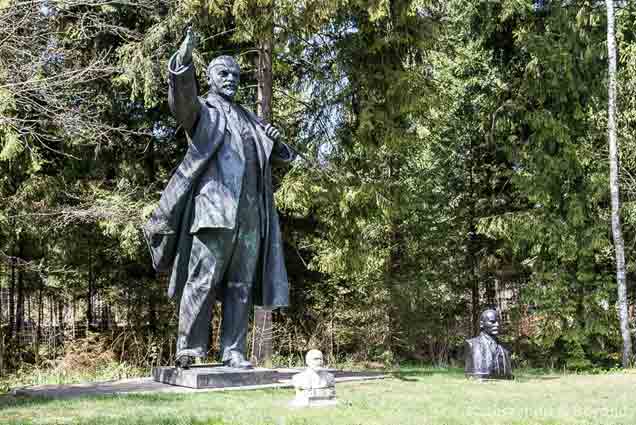
The sculpted pieces once honored those people that the Communist leadership considered heroes, but are now more likely to be vilified for various crimes, degradations and ill-considered actions against independence. As such, this park is an excellent history museum of Communist atrocities in Lithuania. The statues are well identified; detailed descriptions in Russian, Lithuanian and English accompany most of them. Several buildings offer a sober gallery of propaganda art and objects, each of which is described. The odd thing is that all of this is set in a beautiful, forested landscape with a river running through it. The statues are so well placed, almost lovingly. All of which goes counter to the horror of the crimes committed. It is as if these people are being awed and revered, not treated in the shameful way they should be. That said, the park presents a sorrowful history we should none of us forget.”
Memento Park, Budapest, Hungary. On the edge of District XXII
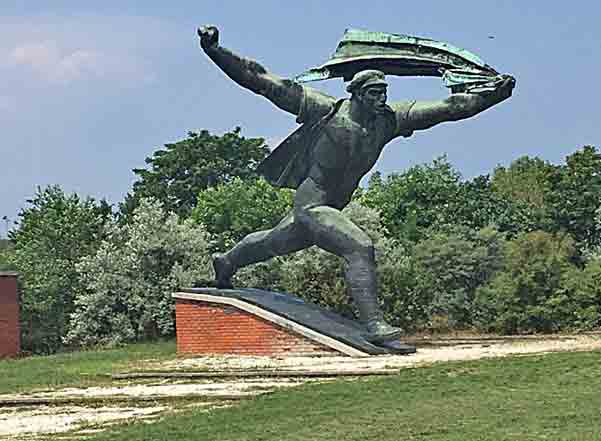
I’ve twice visited Budapest after working at OZORA festival. It’s a city with a dark past. But definitely fascinating and full of ‘stories’. Memento Park is perhaps the final resting place for many fallen Communist statues, including those of Lenin, Marx and Engels, plus lots of memorial plaques that were removed after the downfall of the Communist regime. It includes some very striking Soviet-made gigantic sculptures from the Cold War. As elsewhere in the former Communist-states, statues were built to subjugate the masses – symbols of Total Power. Gigantism, happy, fulfilled, waving and cheering comrades, Stalin’s boots, and the triumphant Red Army soldiers. There’s also some interesting film footage on display including a film about the political secret service. Unfortunately, the current government of Hungary is also exhibiting repressive tendencies and I have had some brushes with the aggressive and authoritarian police and perhaps army on the streets.
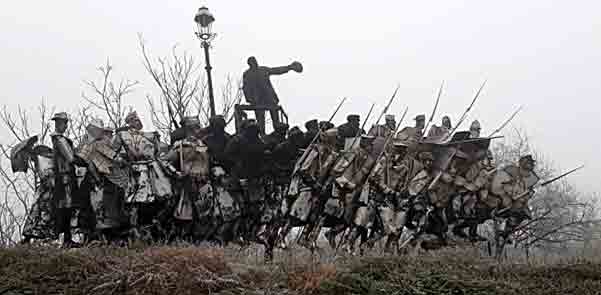 Online, VumbaVentures, California:
Online, VumbaVentures, California:
“Happily transported back in time to the glorious ‘80s and cold war.
As someone who grew up during the cold war, and is now fascinated with its history and relics — and gets a bit nostalgic about those times, likely a sentimentality aligned to the 80’s, in general — I loved this park. I am so happy they preserved these amazing statues and consolidated them in this park just outside Budapest. It makes it easy to see them all, in a nice setting with other interesting relics and information about those times. One of my favourite things to do in Budapest.”
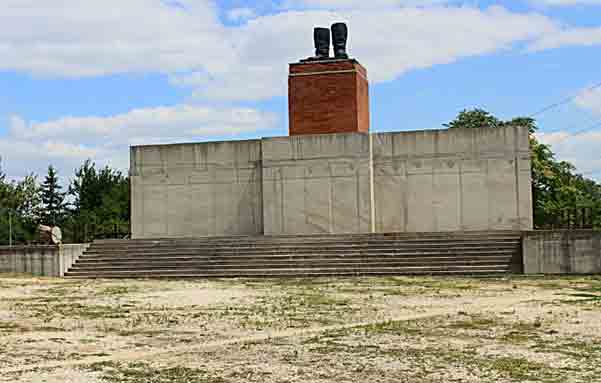
Racist Gandhi, University of Ghana statue
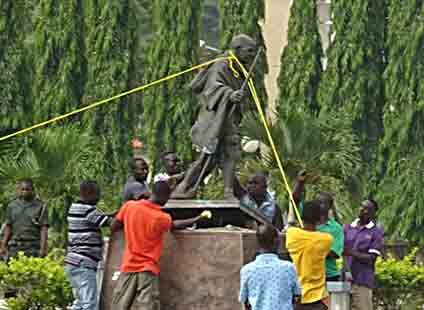
In 2018 there were protests across Africa – in a co-ordinated campaign to tear down Gandhi statues.
Quoted in the ‘Guardian’ (2016) “Opponents of the statue in Ghana quoted several of Gandhi’s early writings in which he referred to black South Africans as ‘kaffirs’ – a highly offensive racist slur – and complained that the South African government wanted to ‘drag down’ Indians to the same level as people he called ‘half-heathen natives’.”
Richard Attenborough, whilst researching and planning for his epic film about the life of Gandhi met many of the significant people in Mohandas Gandhi’s life. At the conclusion of his last meeting with Pandit Nehru, Nehru told Attenborough: “Whatever you do, do not deify him – that is what we have done in India and he was too great a man to be deified.”
Muzeon (formerly the Fallen Statues Art Park), Moscow, Russia
http://www.russianmuseums.info/M400
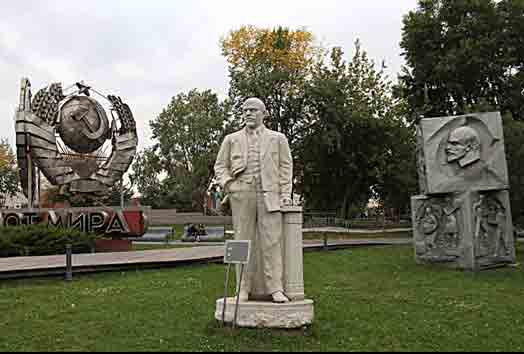
This one, I haven’t visited. It’s billed as the largest open-air sculpture park in Russia.
From Trip Advisor: “Enjoyed having a look through the abandoned Soviet era statues and emblems. Made for some great photo opportunities. Located at the start of Gorky Park and nearby to the Peter the Great statue in the Moscow River, worth a look if you are interested in the former Soviet emblems.”
* * * * * * * * * * * *
So, do we learn from statues and memorials, or, do many deserve their fates at the bottom of a river, a lake, or, in landfill? To be discussed (perhaps)… Alan
* * * * * * * * * * * *

Bristol also had a thriving Viking slave market years before becoming infamous with its links with the Transatlantic Slave trade. Viking slaves were mostly made up of captives or spoils of war or were simply kidnapped in raids. Slaves had absolutely no rights under the Vikings and were treated as little more (or less) than cattle and murdered at random for fun or part of rituals. Many slaves were beheaded and female slaves were frequently raped as pregnant slaves fetched higher prices at markets as a ‘2 for 1’ deal.”
Is it not time for Viking statues in politicly correct Scandinavia to be pulled down or removed?
https://www.thehistorypress.co.uk/articles/slavery-in-history/
Comment by Dave Lawton on 21 June, 2020 at 3:52 pm